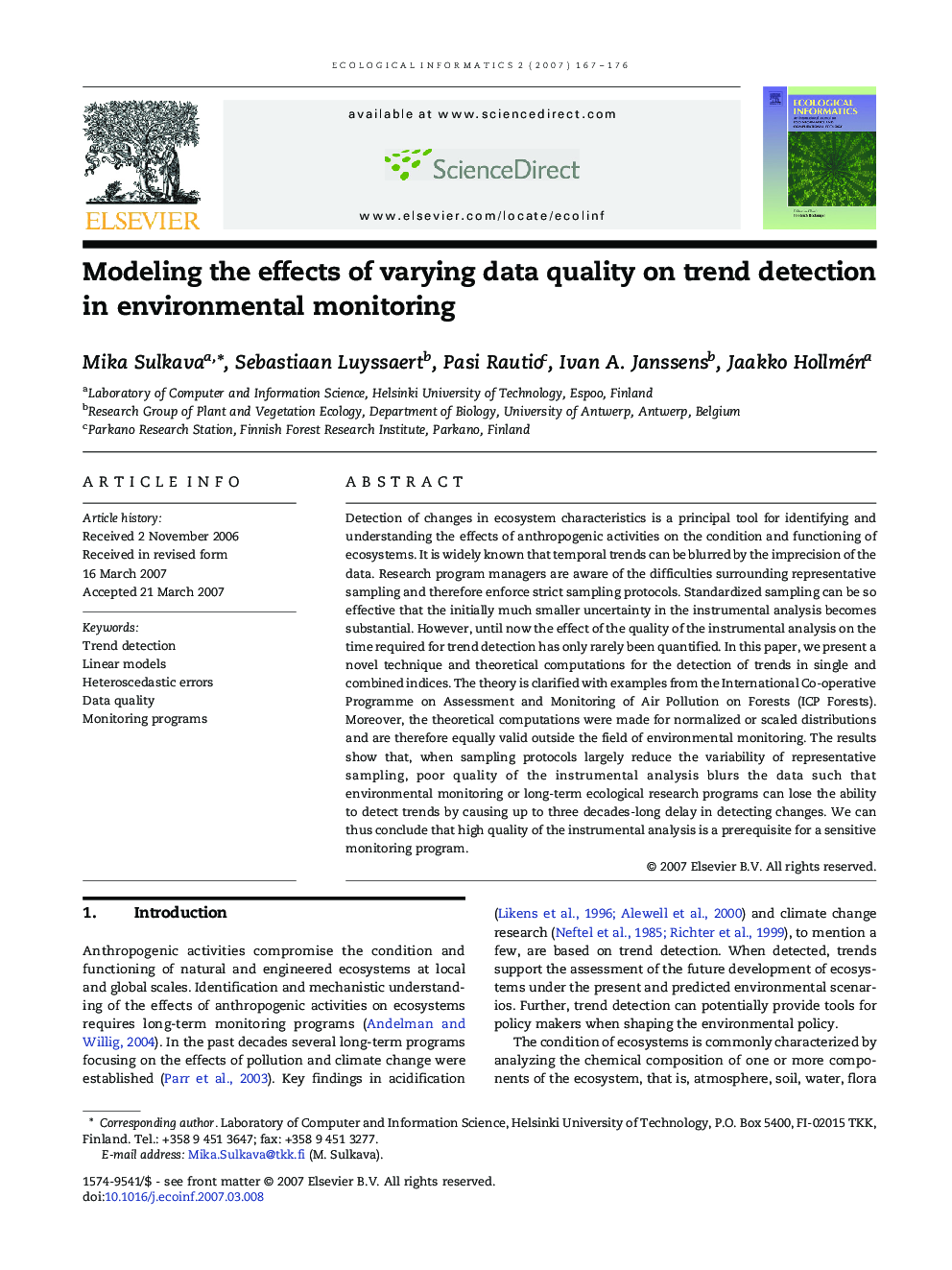| Article ID | Journal | Published Year | Pages | File Type |
|---|---|---|---|---|
| 4375430 | Ecological Informatics | 2007 | 10 Pages |
Detection of changes in ecosystem characteristics is a principal tool for identifying and understanding the effects of anthropogenic activities on the condition and functioning of ecosystems. It is widely known that temporal trends can be blurred by the imprecision of the data. Research program managers are aware of the difficulties surrounding representative sampling and therefore enforce strict sampling protocols. Standardized sampling can be so effective that the initially much smaller uncertainty in the instrumental analysis becomes substantial. However, until now the effect of the quality of the instrumental analysis on the time required for trend detection has only rarely been quantified. In this paper, we present a novel technique and theoretical computations for the detection of trends in single and combined indices. The theory is clarified with examples from the International Co-operative Programme on Assessment and Monitoring of Air Pollution on Forests (ICP Forests). Moreover, the theoretical computations were made for normalized or scaled distributions and are therefore equally valid outside the field of environmental monitoring. The results show that, when sampling protocols largely reduce the variability of representative sampling, poor quality of the instrumental analysis blurs the data such that environmental monitoring or long-term ecological research programs can lose the ability to detect trends by causing up to three decades-long delay in detecting changes. We can thus conclude that high quality of the instrumental analysis is a prerequisite for a sensitive monitoring program.
